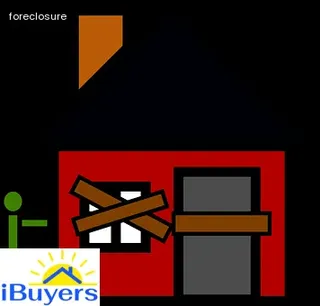Navigating preforeclosure in Ohio can be a daunting task for many homeowners and buyers. To understand the foreclosure process in Ohio, it is important to familiarize oneself with the laws and regulations governing mortgaging and foreclosure.
When a homeowner default on their mortgage payments, the lender can begin legal proceedings to take possession of the property and sell it at auction to pay off the remaining debt. During this process, there is an opportunity for the borrower to negotiate a payment plan with their lender or arrange for a third-party intervention such as loan modification or mediation.
Additionally, there are resources available from Ohio State government that offer assistance to borrowers during preforeclosure. These include counseling services, housing assistance programs, and resources that provide guidance through legal steps of foreclosure defense.
Understanding preforeclosure in Ohio is essential for anyone attempting to navigate through the process while protecting their rights as a homeowner or buyer.

Understanding Ohio foreclosure laws and navigating the process can be difficult. It is important to understand the process to ensure that all legal requirements are met.
The foreclosure process in Ohio typically begins with a lender filing a complaint against a homeowner who has defaulted on their mortgage payments. This complaint will include details about the unpaid debts and requests for the court to issue an order of sale, which allows the home to be sold at public auction.
Once this order is issued, homeowners have up to 28 days to respond or risk having their home sold at auction. After 28 days, if no response has been received, an auction date will be set and notice of the sale must be posted in public places.
At the time of the sale, bidders must submit proof of funds before bidding on the property. The highest bidder at auction then becomes responsible for paying off all liens associated with the property and any outstanding mortgage payments prior to taking ownership of it.
In some cases, homeowners may still be able to negotiate with their lender after receiving a notice of foreclosure in order to avoid going through with an auction sale.
In Ohio, the foreclosure process begins when a homeowner falls behind on their mortgage payments. After missing three consecutive payments, the lender will send out a notice of default to the homeowner.
This notice serves as an official notification that the homeowner has failed to make their payments and must either pay off the debt or lose their home. From there, the lender can choose to pursue legal action through a judicial sale or a non-judicial sale.
If they choose a judicial sale, they will file a complaint with the court and obtain an order from the court allowing them to foreclose on the property. The homeowner then has 28 days to respond to this complaint, after which time a judgment of foreclosure may be issued by the court if it is deemed necessary.
Once this judgement is issued, the sheriff's office will conduct an auction for the property and if no one bids on it, it will become property of the lender. In contrast, with a non-judicial sale, lenders do not need permission from a court in order to repossess your home but you still have 30 days from receiving notice before your home can be sold at auction.
It is important for homeowners facing foreclosure in Ohio to understand both options so they can make informed decisions about how best to protect their rights while navigating this difficult process.

The foreclosure process in Ohio typically begins when a homeowner has gone more than 120 days without making their mortgage payment. This is called a "default" and the lender will then send the homeowner a Notice of Default, which explains the amount that must be paid to bring the loan current.
If the homeowner does not catch up on their payments within 35 days of receiving this notice, then the lender can pursue foreclosure proceedings. The lender may also start foreclosure proceedings if other terms of the mortgage have been violated, such as if taxes or homeowners insurance is not kept current.
Once a Notice of Default is issued, it is important to seek out legal advice from an experienced foreclosure attorney in order to understand all options available and best navigate through this challenging process.
When facing foreclosure, it is important to understand all available strategies to avoid selling your home. One of the most effective strategies is to contact your lender and negotiate a repayment plan or loan modification.
This can help you manage any past-due payments and reduce the amount of time needed to catch up on late payments. Another option is to refinance your mortgage loan with a new lender, which may offer more favorable terms for paying off your mortgage.
Additionally, if you have equity in your home, you could consider a cash-out refinance or a Home Equity Line of Credit (HELOC). Lastly, foreclosure defense attorneys can be very helpful in helping homeowners explore their legal options and represent them in court if necessary.
Understanding Ohio foreclosure laws will provide insight into the timeline and process of foreclosure and how best to navigate it.

Filing for bankruptcy can be a viable solution to stop foreclosure in Ohio. It is important to understand how the process works and the legal rights that are available.
Bankruptcy is a way of legally declaring that an individual or business cannot pay their debts, and it provides some protections against creditors attempting to collect on those debts. By filing for bankruptcy, the debtor can halt foreclosure proceedings and protect their home from being sold at auction by the lender.
In some cases, this may also allow them to renegotiate the terms of their loan, making payments more manageable or eliminating certain penalties. Additionally, filing for bankruptcy may help reduce other types of debt such as credit card debt or medical bills, further reducing financial strain and allowing homeowners to focus on catching up on their mortgage payments.
Navigating Ohio's foreclosure laws can be difficult and it is important to speak with an experienced attorney who can provide guidance. With proper legal assistance, filing for bankruptcy can be a powerful tool in stopping foreclosure proceedings and protecting a homeowner's financial future.
Ohio is one of the most foreclosure-prone states in the nation, so it's important for homeowners to understand their rights and how to navigate the foreclosure process. Knowing where to turn for help can be a key factor in stopping a foreclosure before it begins.
Ohio residents facing imminent foreclosure should first contact their lender to discuss options such as loan modifications, forbearance agreements, or repayment plans. The Ohio Attorney General's Office offers resources on its website with information on how to ask creditors for more time or reduce payments.
In addition, there are numerous nonprofit organizations throughout the state that offer free counseling and financial advice to homeowners in need of assistance. With some patience and research, it is possible for an Ohio homeowner to avoid or delay foreclosure by negotiating with their mortgage lender.

Navigating Ohio foreclosure laws can be a difficult and stressful process, especially when it comes to understanding breach letters. A breach letter is sent by the lender or their attorney to the borrower when they have failed to make payments as agreed upon in the mortgage contract.
This letter outlines that the borrower has defaulted on the loan and informs them of their options regarding foreclosure proceedings. If a breach letter is received, it's important to act quickly and communicate with your lender as soon as possible.
Depending on the terms of your loan, you may have several options such as refinancing or paying back all of the missed payments in one lump sum. If you cannot come to an agreement with your lender, then they may proceed with filing for foreclosure in court.
It's important to understand that ignoring a breach letter will not make it go away, and if no action is taken then foreclosure proceedings could begin without warning.
When considering foreclosure in Ohio, it is important to weigh the pros and cons of the situation. On one hand, allowing a home to go into foreclosure can result in a homeowner avoiding any lingering debt associated with the property and possibly having their credit score remain unaffected as long as they do not have other delinquent loans.
Additionally, it gives a borrower more time to save up money and make better financial decisions while going through the process. On the other hand, however, foreclosure can lead to difficulty in applying for a loan or renting an apartment in the future due to its significant impact on a person’s credit report.
Other issues that come along with it include possible legal fees, accumulating late fees and interest payments that can increase over time, and public notice of the foreclosure which can be embarrassing for many people. It is important for homeowners to understand all of these potential outcomes before making any decision about letting their house go into foreclosure in Ohio.

In Ohio, a deficiency judgment is a court order that requires a homeowner to pay the difference between what they owe on their mortgage and what they get from the foreclosure sale. This can be particularly difficult for borrowers who are already struggling financially.
Fortunately, there are several strategies to prevent or reduce deficiency judgments in Ohio. If a borrower can negotiate with the bank to accept less than the full amount of debt owed, they may be able to avoid a deficiency judgment altogether.
Additionally, if the lender does file a lawsuit for the deficiency judgment, borrowers may be able to reduce their liability by filing for bankruptcy before judgment is entered. It is also important to keep in mind that courts have discretion when it comes to determining how much of the debt must be paid, so they may choose to lower or even eliminate any potential deficiency amount if they determine it would cause undue hardship to the borrower.
Lastly, homeowners should take action as soon as possible when facing foreclosure in order to maximize their chances of achieving an outcome that is most favorable for them.
Missing mortgage payments can have serious consequences. Homeowners who miss a payment or two on their mortgage could see their property go into foreclosure.
It is important to understand the Ohio foreclosure laws and process to ensure that homeowners are aware of their rights. Foreclosure in Ohio is typically done through an expedited judicial process, which is often referred to as “strict foreclosure” and it does not require the lender to take possession of the property.
In this process, if the homeowner fails to make payments, the court will issue a judgment allowing the lender to seize and sell the property in order to recoup any unpaid amounts. This means that homeowners can lose their home quickly, even if they are able to catch up on past due payments.
It is also important for homeowners to be aware of any defenses that may be available under Ohio law, such as a statute of limitations for filing suit or arguing for wrongful foreclosure. Knowing these defenses may help homeowners preserve their right to stay in their home and keep up with payments going forward.
Furthermore, understanding applicable law may help homeowners avoid unnecessary fees associated with missed payments or foreclosure proceedings.

When facing foreclosure in Ohio, homeowners have rights to protect their home and their financial future. First, it is important to know Ohio's foreclosure timeline.
The process generally begins with a notice of default, which gives the homeowner 30 days to respond. If the response is not received by the deadline, the lender can proceed with the foreclosure.
During this time, homeowners should reach out to an attorney or housing counselor for assistance and advice on how best to navigate the process. Additionally, Ohio state law requires lenders to provide guidance and resources to borrowers in default who want to explore options such as loan modification or reinstatement of the loan.
This guidance must be provided before any court action is taken and may help borrowers avoid foreclosure. Homeowners should also take steps to ensure that all foreclosure documents are accurate, complete and properly filed with the court system.
Finally, homeowners should look into potential defenses they may have against a foreclosure suit; these include proving that the lender was not legally allowed to foreclose or that they were not given adequate notice prior to filing a lawsuit. By understanding their rights during an Ohio foreclosure, homeowners can protect their home and financial future.
Navigating the foreclosure process in Ohio can be complex. It's important to be familiar with both state and federal laws to ensure you are making the best decisions when facing foreclosure.
Ohio law requires that lenders follow certain steps before they can foreclose on a property, such as providing written notice of default and an opportunity for the homeowner to cure their debt or negotiate a settlement. Additionally, under federal law, certain protected classes of homeowners may be eligible for special assistance, including loan modifications or other forms of debt relief.
Understanding these laws is essential for anyone facing foreclosure in Ohio so they can make informed decisions about their options.

In Ohio, filing a complaint to stop a sale requires an understanding of the state’s foreclosure laws and the process for navigating it. First, one should find out if they are eligible to file a complaint.
The borrower must be able to show that their mortgage lender has not followed the rules specified in the contract or violated any state law related to foreclosure. Next, the borrower should gather all relevant documents including proof of payment history, tax records, title information, and any other evidence that can help prove their case.
After assembling these materials, a complaint must be prepared and filed with the court. The document should include details about why the sale should be stopped and how the foreclosure process has been mishandled by the lender as well as evidence supporting those claims.
Once this is done, a hearing date will be set and both parties will present their cases before a judge who will decide whether or not to stop the sale. It is important that borrowers understand Ohio foreclosure laws and know how to navigate this process because filing a successful complaint can help them avoid eviction and protect their rights as homeowners.
The foreclosure process in Ohio can vary in length depending on a number of factors. However, it generally takes around five to six months for a property to go through the entire foreclosure process.
The timeline begins when the homeowner receives a notice of default from their lender. This document informs them that they are not meeting their loan obligations and must take action or risk losing the property.
After this notice is sent, the homeowner has 28 days to respond and either bring the loan current or enter into a repayment agreement with their lender. If these efforts are unsuccessful, then the lender may file for foreclosure.
From there, an auction is scheduled and advertised publicly for at least 21 days before it takes place. Finally, if no one makes a successful bid during the auction, then title transfers to the lender who can resell it on the market.
Understanding Ohio’s foreclosure laws and how long it takes to foreclose on a house can help individuals navigate this difficult process and protect their rights as homeowners.

The unfortunate reality is that many individuals and families in Ohio are faced with the difficult decision to let their house go into foreclosure. There are a variety of reasons why homeowners may be unable to keep up with mortgage payments, including job loss, unexpected medical bills, divorce or death of a spouse, and other financial hardships.
Many people simply don’t understand their legal rights or the process for navigating a foreclosure. In some cases, people may be unaware of available programs and options that could help them avoid foreclosure altogether.
Furthermore, some homeowners are not aware of the long-term consequences of letting their home enter foreclosure, such as difficulty obtaining future credit. Understanding Ohio Foreclosure Laws and how to navigate the process can provide individuals with the resources they need to make an informed decision and take control of their financial future.
In Ohio, foreclosures are typically initiated with a lawsuit that is filed in the court of common pleas by the lender against the borrower. This results in an order for sale being issued, which directs the sheriff to set a date for a public sale of the property.
Before foreclosure can take place, lenders must provide borrowers with written notice of their rights and allow them to cure the default or otherwise negotiate a resolution. Homeowners have access to resources such as housing counseling and legal aid services to help them understand their rights and navigate the process.
If they cannot reach an agreement with the lender, they may be able to work out an alternative arrangement such as a deed-in-lieu of foreclosure or short sale. The best way for homeowners facing foreclosure to protect their interests is to seek qualified legal advice from an experienced attorney who can discuss all available options with them.
Yes, Ohio is a right of redemption state. This means that once a foreclosure sale is complete, the homeowner has the right to redeem the property within a certain period of time by paying the amount bid at foreclosure plus costs.
If successful, the homeowner can remain in possession of their home during this period. Understanding Ohio foreclosure laws is important for homeowners seeking to navigate and protect their rights through the process.
It's important to note that even if a homeowner successfully redeems their property, they will still be liable for any back payments and other unpaid debts associated with their mortgage loan. Additionally, understanding Ohio's redemption period is essential- it typically lasts anywhere from three months to one year depending on the jurisdiction.
Taking advantage of all legal options available and educating oneself on Ohio’s foreclosure laws can help homeowners protect and preserve their homes throughout the process.